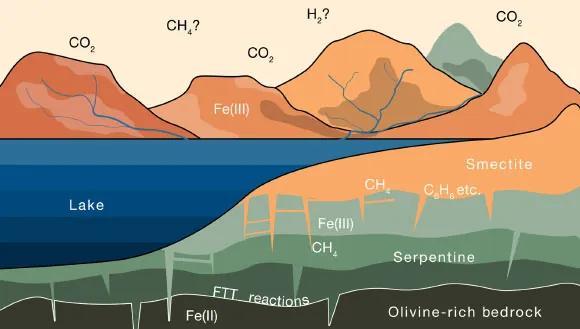
New Findings Suggest Early Martian Atmosphere May Be Hidden Beneath Surface Clays
2024-09-27
Introduction
Recent geological investigations of Mars reveal an intriguing possibility: a significant portion of the planet's early atmosphere, potentially containing up to 80% of its original carbon dioxide, may be trapped in clay minerals covering its crust. The Martian atmosphere once boasted a thick blanket of carbon dioxide, estimated to be between 0.25 to 4 bars. However, around 3.5 billion years ago, cataclysmic events led to a rapid atmospheric thinning, dropping to a mere 0.054 bar—illustrating a substantial loss of carbon dioxide that remains largely enigmatic.
Research Insights
MIT geologists Joshua Murray and Oliver Jagoutz have proposed that the answer to this mystery might be found not in the heavens but within the Martian soil itself. Their research draws parallels between Earth's geological mechanisms and those on Mars, suggesting that the planet's extensive clay materials could serve as significant reservoirs for carbon dioxide.
Focus on Smectite Clay
The focus of their study was on a specific clay mineral known as smectite, which is effective at trapping carbon. Within the microscopic folds of smectite lies the potential for carbon to remain undisturbed for billions of years. This raises the tantalizing prospect that Martian carbon, now stored in this form, could eventually be extracted and repurposed for future missions, possibly even to create propellant for journeys between Earth and Mars.
Potential for Methane Energy
"We illustrate that similar processes likely occurred on Mars, with vast amounts of carbon transforming into methane and being sequestered in clays," explained Professor Jagoutz. He emphasized that this methane could still be present, offering a potential energy source for future Martian exploration.
Geological Processes
The research team aimed to uncover the geological processes at play in the Martian lithosphere, the outer layer of the planet that includes its crust and upper mantle. Smectite is particularly promising for further study, not only due to its carbon-trapping capabilities but also because its formation process is linked to geological activity—which, albeit limited on Mars compared to Earth, may still have occurred in different forms.
Comparison with Earth
Unlike Earth, where tectonic plates have historically contributed to smectite formation through shifts and uplifting, Mars presents a unique case. The researchers examined evidence suggesting that parts of the Martian crust contain ultramafic igneous rocks, similar to those yielding smectite on Earth. Observations of patterns resembling river systems imply that water once flowed over the Martian surface, potentially interacting with these rocks to generate clay deposits.
Model Simulations
Utilizing existing models on how igneous rocks react with water and gases, the team simulated conditions on Mars that would allow these reactions to result in clay formation. They theorized that with a carbon dioxide-rich atmosphere and plenty of surface water present over billions of years, reactions involving olivine—a prevalent mineral in the Martian crust—would lead to the gradual formation of smectite clays.
Key Processes
The detailed model indicated that as water percolated through olivine-rich rocks, carbon dioxide could have transformed into methane while forming iron-rich minerals. This key process hints that the clay layer covering Mars could hold an immense store of carbon, possibly accounting for much of the lost atmosphere.
Implications for Mars' Atmosphere
"Our estimates of global clay volumes on Mars suggest that a significant fraction of the planet's primordial carbon dioxide could be hidden in its clay-rich crust," Murray noted. "In many ways, the missing pieces of Mars’ atmosphere could be right beneath our feet."
Conclusion
These groundbreaking findings have been documented in the journal Science Advances and could pave the way for future studies into Martian geology, climate history, and the potential for using its in-situ resources for exploration strategies. As we prepare for future missions to Mars, understanding the planet's history with its atmosphere might be more crucial than ever, revealing both the past and future possibilities for human exploration.
Future Exploration
Stay tuned as we continue to unravel the mysteries of Mars and prepare for our next bold steps into the cosmos!





 Brasil (PT)
Brasil (PT)
 Canada (EN)
Canada (EN)
 Chile (ES)
Chile (ES)
 España (ES)
España (ES)
 France (FR)
France (FR)
 Hong Kong (EN)
Hong Kong (EN)
 Italia (IT)
Italia (IT)
 日本 (JA)
日本 (JA)
 Magyarország (HU)
Magyarország (HU)
 Norge (NO)
Norge (NO)
 Polska (PL)
Polska (PL)
 Schweiz (DE)
Schweiz (DE)
 Singapore (EN)
Singapore (EN)
 Sverige (SV)
Sverige (SV)
 Suomi (FI)
Suomi (FI)
 Türkiye (TR)
Türkiye (TR)